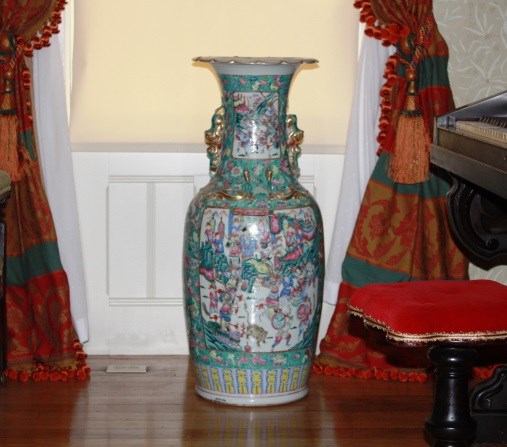Last updated: January 23, 2021
Article
Giles B. Harber: Navy Cadet, Admiral, Friend of James & Lucretia Garfield

Wikipedia
Giles Bates Harber’s association with James A. Garfield began when the Youngstown, Ohio native (born on September 24, 1849) became the first Naval Academy cadet appointed by Congressman James A. Garfield. Garfield referenced this in a diary entry on July 19, 1878: “Towards evening, Lt. G. B. Harber of the Navy came to make us a visit. He is a noble fellow, my first cadet at the Naval Academy.”
Others of Congressman Garfield’s diary entries show a close relationship between Mr. Harber and the Garfield family. “Spent most of the day (Sunday, July 21, 1878) in answering letters, Crete, Martha (the children’s governess) and Lt. Harber aiding me.” On that same day, “… [I] took my two teams and drove all our family to the lake… Harber and the boys and I had a fine swim in the breakers.” On December 25th, “[Miss] Ransom, Mrs. Reed, Lieut. Harber… took Christmas Dinner with us and stayed during the afternoon. We had a very pleasant and enjoyable time…”

NPS photo
In the late 1870s, Harber was in Washington as an ordinance instructor at the Washington Navy Yard. He was a frequent guest at the Garfield’s dinner table at their home on 13th and I Streets. On occasion, he attended church with them. In May 1881, President Garfield noted at the end of a three-day Washington visit, “Lt. Harber left us last evening – on his way to N.Y. to take command of his first ship, the Alarm.”
The last entry in James Garfield’s diary is dated Sunday, June 26, 1881. Writing from Elberon, New Jersey, where he had taken his wife Lucretia to restore her malaria-compromised health, the President noted that he attended church at St. James and read to “Crete” from Holland and Its People. “Lieut. Harber came and spent part of the day.” This is another clear indication that Giles Harber was closely connected to the Garfields.
Harber was stationed in Asia between 1871 and 1875. While there, he sent a pair of Chinese vases to the Congressman and Mrs. Garfield. One of the vases was irreparably damaged in transit, but the other survived the long voyage. It can be seen in the parlor of the Garfield home today.

Wikipedia
This moment in Harber’s career took place three years after the death of his mentor and friend, President James A. Garfield. Shortly after the President’s funeral in September 1881, Harber wrote to Mrs. Garfield a seven-page letter in which he spoke emotionally of his relationship with Mrs. Garfield and her husband: “The title ‘adopted parents’ was a source of pleasure and pride whenever I heard it used or referred to. To feel that he thought enough of me to look upon me as a son was a joy and often I wondered if to show, not tell, my appreciation of those words would be possible. However great my desire, I presume I never succeeded. Yet I have no doubt he knows now.” He went on, “I sincerely trust I may prove not unworthy to be called a son adopted by even so good a man, for I believe that his life and character will ever remain so vividly before me that I could not go very far astray, even if I would, from the path of honor.”

U.S. GenWeb Project
Rear Admiral Harber died in 1925. In an obituary, his execution of the recovery of the bodies of George W. DeLong and his crew was described as “a magnificent example of the historic pluck and daring of the American naval officer.” This summation of his career shows that James Garfield’s belief in and affection for his young friend was not misplaced.
Written by Alan Gephardt, Park Ranger, James A. Garfield National Historic Site, August 2016 for the Garfield Observer.
